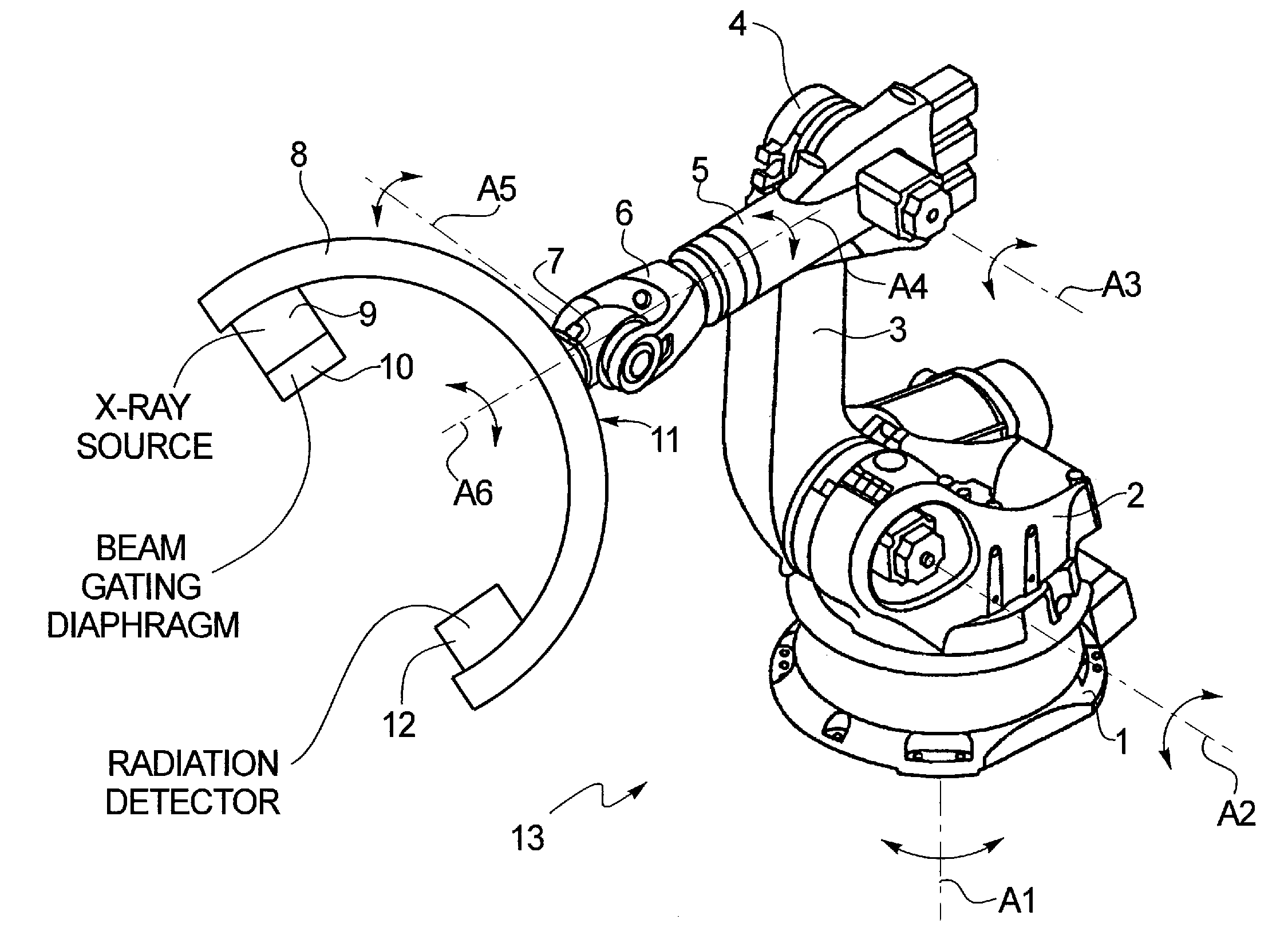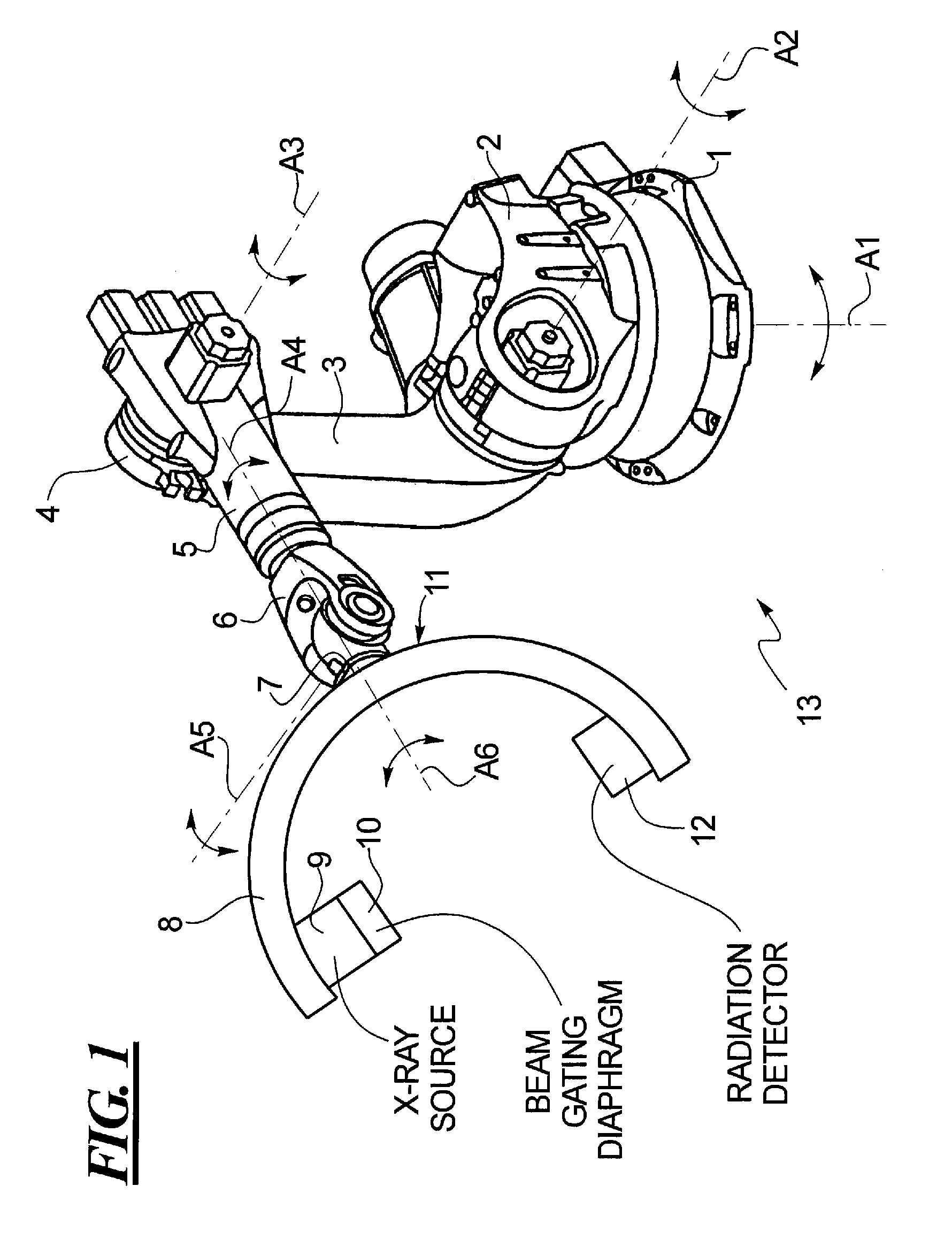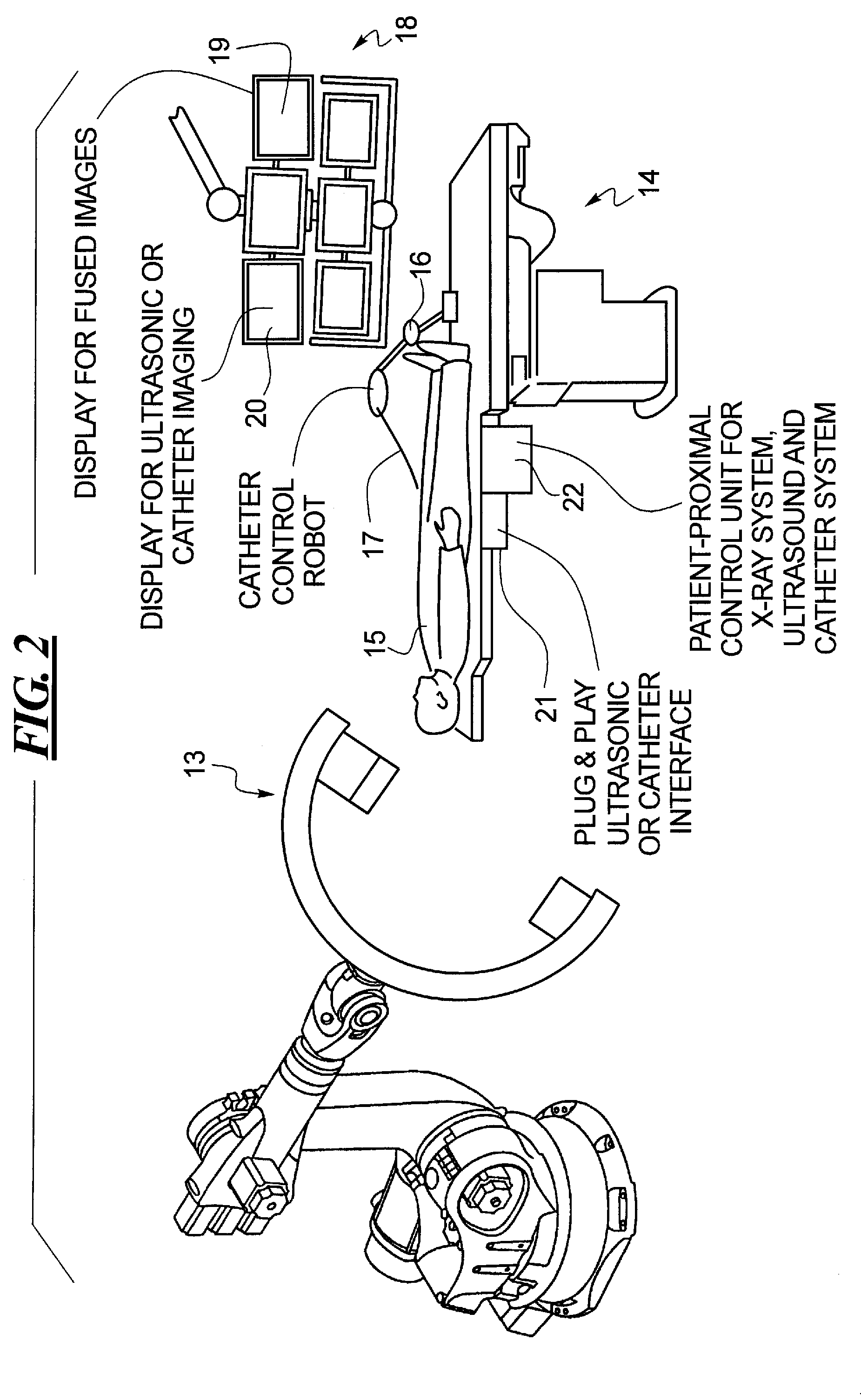Method for therapy of heart valves with a robot-based x-ray device
a robot-based x-ray and heart valve technology, applied in the field of cardiological therapy, can solve the problems of heart valve damage, long recovery (or convalescence) time for patients, and high risks associated with i
- Summary
- Abstract
- Description
- Claims
- Application Information
AI Technical Summary
Benefits of technology
Problems solved by technology
Method used
Image
Examples
Embodiment Construction
[0049]A method is provided for placing an artificial heart valve in a patient. The method of a preferred embodiment utilizes a robot arm x-ray image acquisition system 13 as shown in FIG. 1 of the type described in DE 10 2005 012 700 A1 for purposes other than implementing minimally invasive procedures involving heart valves. The robotic portion of the device 13 is mounted to a base 1 which, in this embodiment, is shown as a base affixed to the floor of a room in which the device 13 is used. The device 13, however, may also be wall-mounted or ceiling-mounted. A shoulder articulation 2 is rotatably mounted on the base 1, so as to be rotatable around a substantially vertical axis A1. The shoulder articulation is connected to a first arm portion 3 of an arm articulation, so that the first arm portion 3 is rotatable around a substantially horizontal axis A2. The first arm portion 3 is connected via an elbow articulation 4 to a second arm portion 5. The first arm portion 3 and the second...
PUM
 Login to View More
Login to View More Abstract
Description
Claims
Application Information
 Login to View More
Login to View More - R&D
- Intellectual Property
- Life Sciences
- Materials
- Tech Scout
- Unparalleled Data Quality
- Higher Quality Content
- 60% Fewer Hallucinations
Browse by: Latest US Patents, China's latest patents, Technical Efficacy Thesaurus, Application Domain, Technology Topic, Popular Technical Reports.
© 2025 PatSnap. All rights reserved.Legal|Privacy policy|Modern Slavery Act Transparency Statement|Sitemap|About US| Contact US: help@patsnap.com



